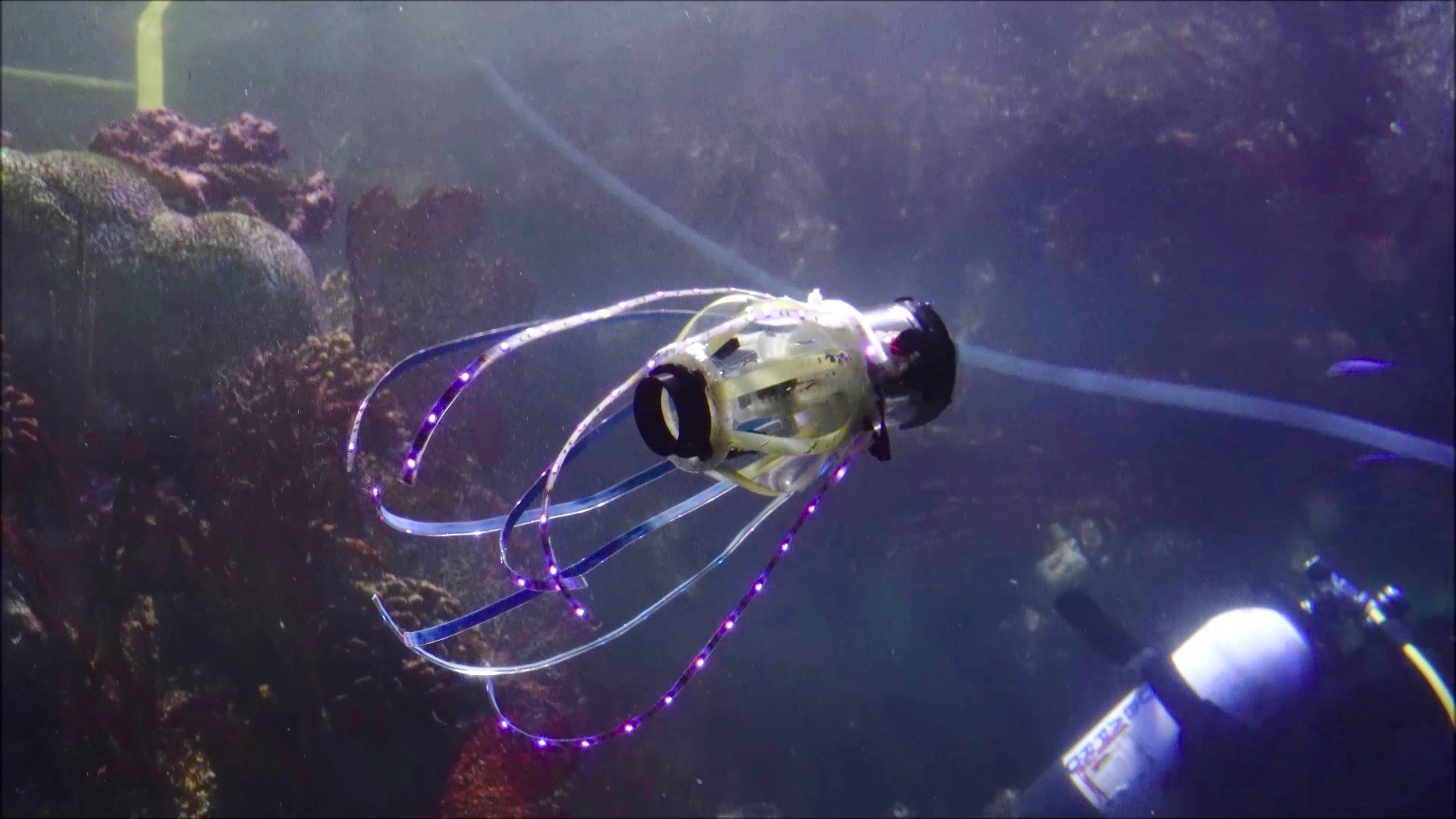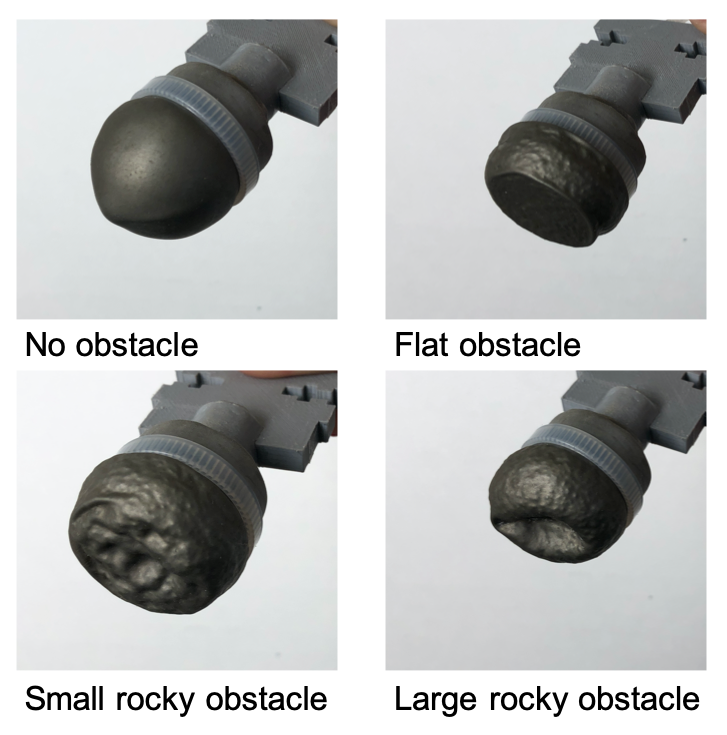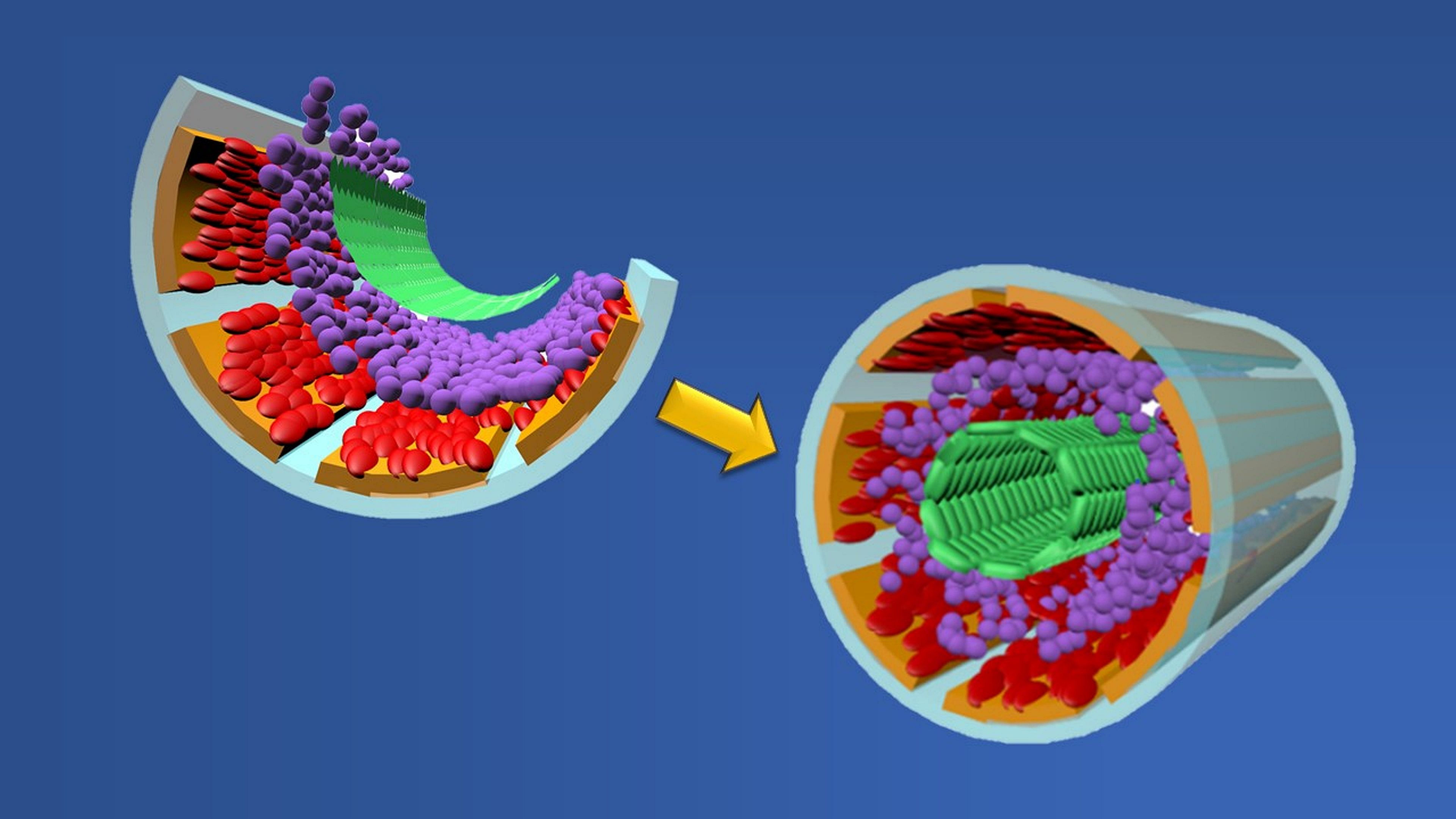By mimicking a desert-dwelling chameleon, a team reporting in ACS’ Nano Letters has developed an energy-efficient, cost-effective coating. The material could keep buildings cool in the summers — or warm in the winters — without additional energy.
Tag: Biomimicry
Active Matter, Curved Spaces: Mini Robots Learn to ‘Swim’ on Stretchy Surfaces
Physicists are using small wheeled robots to better understand indirect mechanical interactions, how they play a role in active matter, and how we can control them. Their findings, “Robotic swimming in curved space via geometric phase” are recently published in the The Proceedings of the National Academy of Sciences (PNAS).
The physics of walking is simpler than we thought
The physics of walking for multi-legged animals and robots is simpler than previously thought. That is the finding described by a team of roboticists, physicists and biologists in the Sept. 5 issue of the Proceedings of the National Academy of Sciences, in a paper titled “Walking is like slithering: a unifying, data-driven view of locomotion.”

This ‘squidbot’ jets around and takes pics of coral and fish
Engineers at the University of California San Diego have built a squid-like robot that can swim untethered, propelling itself by generating jets of water. The robot carries its own power source inside its body. It can also carry a sensor, such as a camera, for underwater exploration. The researchers detail their work in a recent issue of Bioinspiration and Biomimetics.

These flexible feet help robots walk faster
Roboticists at the University of California San Diego have developed flexible feet that can help robots walk up to 40 percent faster on uneven terrain such as pebbles and wood chips. The work has applications for search-and-rescue missions as well as space exploration.

Sticky business
Kaichang Li has spent his career crafting environmentally friendly adhesives. His first product, an adhesive made from soy flour and magnesium oxide, is utilized extensively throughout the hardwood-plywood industry. Now, Li’s lab has developed a vegetable-based pressure-sensitive adhesive with avast array of applications in multiple industries.

Research News Tip Sheet: Story Ideas From Johns Hopkins
During the COVID-19 pandemic, Johns Hopkins Medicine Media Relations is focused on disseminating current, accurate and useful information to the public via the media. As part of that effort, we are distributing our “COVID-19 Tip Sheet: Story Ideas from Johns Hopkins” every Tuesday, throughout the duration of the outbreak.